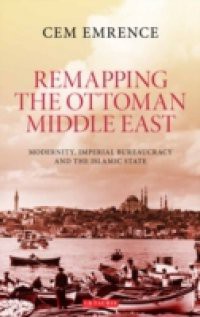Nationalist narratives of the Ottoman Empire's collapse are commonplace. Remapping the Ottoman Middle East examines alternative and disparate routes to modernity during the nineteenth century._x000D__x000D_Pursuing a comparison of different regions of the empire, this book demonstrates that the Ottoman imperial universe was shaped by market relations on the coast; imperial bureaucracy in the interior; and religious trust networks in the frontier. The coastal framework represented the port-cities and commercial hinterlands of western Anatolia and the eastern Mediterranean littoral; the interior path marked the inland experience of central Anatolia, Syria and Palestine; and the frontier incorporated the contentious borderland regions of eastern Anatolia, Iraq and the Arabian Peninsula. This gave rise to three different ruling systems - contested rule on the coast where non-Muslim middle classes enjoyed the spoils of foreign trade but had limited political leverage with the Ottoman state; consensual rule in the interior where the hegemony of the late Ottoman state was backed up by bureaucratic institutions, domestic markets and a powerful urban Sunni bloc; and thin rule in the frontiers - where rural-religious leaderships, operating on protection rents, continually clashed with the Ottoman state over centralization. _x000D__x000D_The book makes three main contributions to the field. Firstly, it departs from widely used state-centric models and offers a novel framework which is spatial, path-dependent and comparative. Secondly, it highlights the Ottoman input in the making of the modern Middle East, unveiling regional routes to modernity in the region. In doing so, this analysis differs from popular nationalist histories, micro-history studies and great power narratives that have characterized the Middle Eastern studies field since WWII. Finally, this book provides a truly interdisciplinary account that operates at the interstices of global history, late Ottoman studies, and social sciences. Introducing a persuasive new model for understanding the late Ottoman world, this book will be essential reading for historians of the Ottoman Empire and the nineteenth century._x000D_

